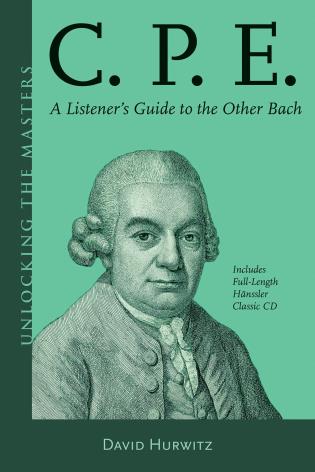
ROWMAN & LITTLEFIELD/SCARECROW PR. - 8108
C.P.E. A Listener's Guide to the Other Bach
Quantity:
Pickup available at Juilliard Store
Usually ready in 4 hours
C.P.E. A Listener's Guide to the Other Bach
Juilliard Store
Pickup available, usually ready in 4 hours
144 West 66th Street
New York NY 10023
United States
Carl Philipp Emanuel Bach (1714-1788) has to be the most rewarding, expressive, and entertaining of all the composers whose work fell into obscurity in the years following his death. He was overshadowed both by the rediscovery of his father, Johann Sebastian, and by the rise of the classical composers Haydn, Mozart, and Beethoven in Vienna. In his lifetime, however, he was considered “the great Bach ” a musician of astonishing originality and a true original genius. His contemporaries were right.
Because modern editions of C. P. E. Bach's music were few and far between, it has been difficult for performers and record collectors to assess and enjoy his achievement, but over the past two decades the situation has begun to improve. His output was vast: 52 keyboard concertos, a dozen and a half symphonies, hundreds of keyboard sonatas and character pieces, and a wealth of songs, choral music, and chamber works.
Accompanied by a full-length Hänssler Classic CD of the composer's finest and most representative works, this survey offers a comprehensive overview of this magnificent, all-but-unknown body of music and makes the case for regarding C. P. E. as a true classic.
Because modern editions of C. P. E. Bach's music were few and far between, it has been difficult for performers and record collectors to assess and enjoy his achievement, but over the past two decades the situation has begun to improve. His output was vast: 52 keyboard concertos, a dozen and a half symphonies, hundreds of keyboard sonatas and character pieces, and a wealth of songs, choral music, and chamber works.
Accompanied by a full-length Hänssler Classic CD of the composer's finest and most representative works, this survey offers a comprehensive overview of this magnificent, all-but-unknown body of music and makes the case for regarding C. P. E. as a true classic.

